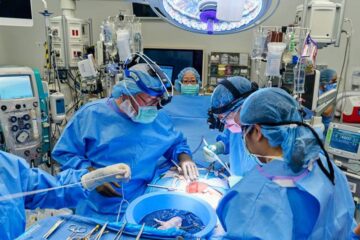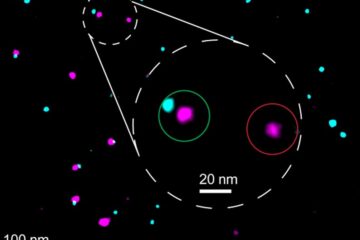Pushing the envelope to overcome HIV drug resistance

The evolution of resistance to currently prescribed HIV-1 protease inhibitors is devastating to patients and is surprising given the way these drugs work. Protease inhibitors are all small-molecule, competitive, active-site inhibitors–low molecular weight compounds that fit squarely in the center of the active site of HIV-1 protease and prevent protein processing that is essential to the replication of the virus. It would seem as though mutations occurring in the protease that prevent drug binding and result in drug resistance would also prevent normal substrate binding, and thus compensatory changes in the substrate would be required for the virus to survive. However, research from the lab of Celia Schiffer at the University of Massachusetts Medical School has revealed a common structural theme in protease inhibitor resistance.
By comparing the structures of several substrate-protease complexes, they establish a “substrate envelope” to define the three-dimensional shape that is shared by all the substrates as they are bound in the active site. They then go on to define an “inhibitor envelope” that shows how numerous protease inhibitors fit only partially within the substrate envelope. Where the inhibitors protrude beyond the confines of the substrate envelope, there is the potential for unique molecular contacts to the protease. Also, when the protease mutates at unique sites that contact the inhibitor envelope but not the substrate envelope, drug resistance emerges. This general principle offers a rational basis for combating drug resistance more aggressively by preventing a common mode of escape. Such a tool would be of enormous benefit in the worldwide fight against AIDS.
Nancy M. King, Moses Prabu-Jeyabalan, Ellen A. Nalivaika, and Celia A. Schiffer: “Combating Susceptibility to Drug Resistance: Lessons from HIV-1 Protease”
Media Contact
More Information:
http://www.cell.comAll latest news from the category: Health and Medicine
This subject area encompasses research and studies in the field of human medicine.
Among the wide-ranging list of topics covered here are anesthesiology, anatomy, surgery, human genetics, hygiene and environmental medicine, internal medicine, neurology, pharmacology, physiology, urology and dental medicine.
Newest articles

High-energy-density aqueous battery based on halogen multi-electron transfer
Traditional non-aqueous lithium-ion batteries have a high energy density, but their safety is compromised due to the flammable organic electrolytes they utilize. Aqueous batteries use water as the solvent for…

First-ever combined heart pump and pig kidney transplant
…gives new hope to patient with terminal illness. Surgeons at NYU Langone Health performed the first-ever combined mechanical heart pump and gene-edited pig kidney transplant surgery in a 54-year-old woman…

Biophysics: Testing how well biomarkers work
LMU researchers have developed a method to determine how reliably target proteins can be labeled using super-resolution fluorescence microscopy. Modern microscopy techniques make it possible to examine the inner workings…





















